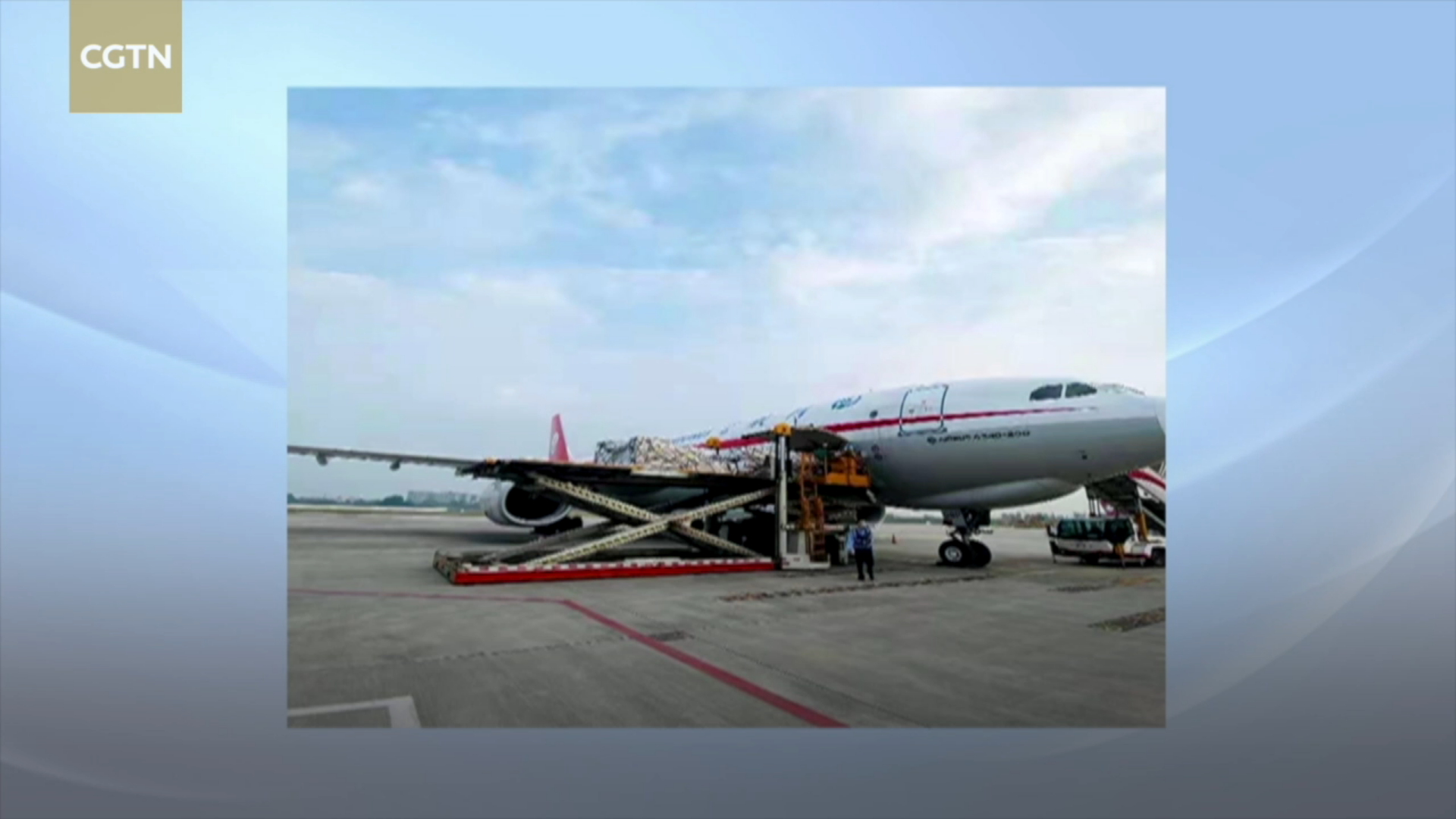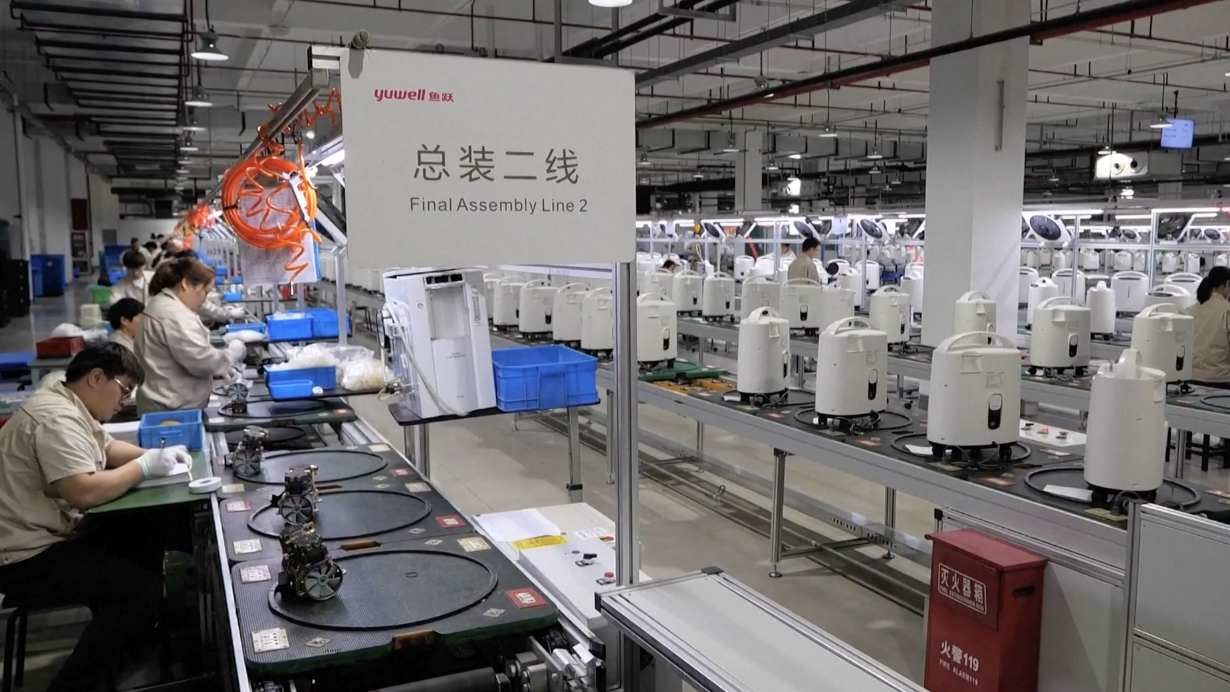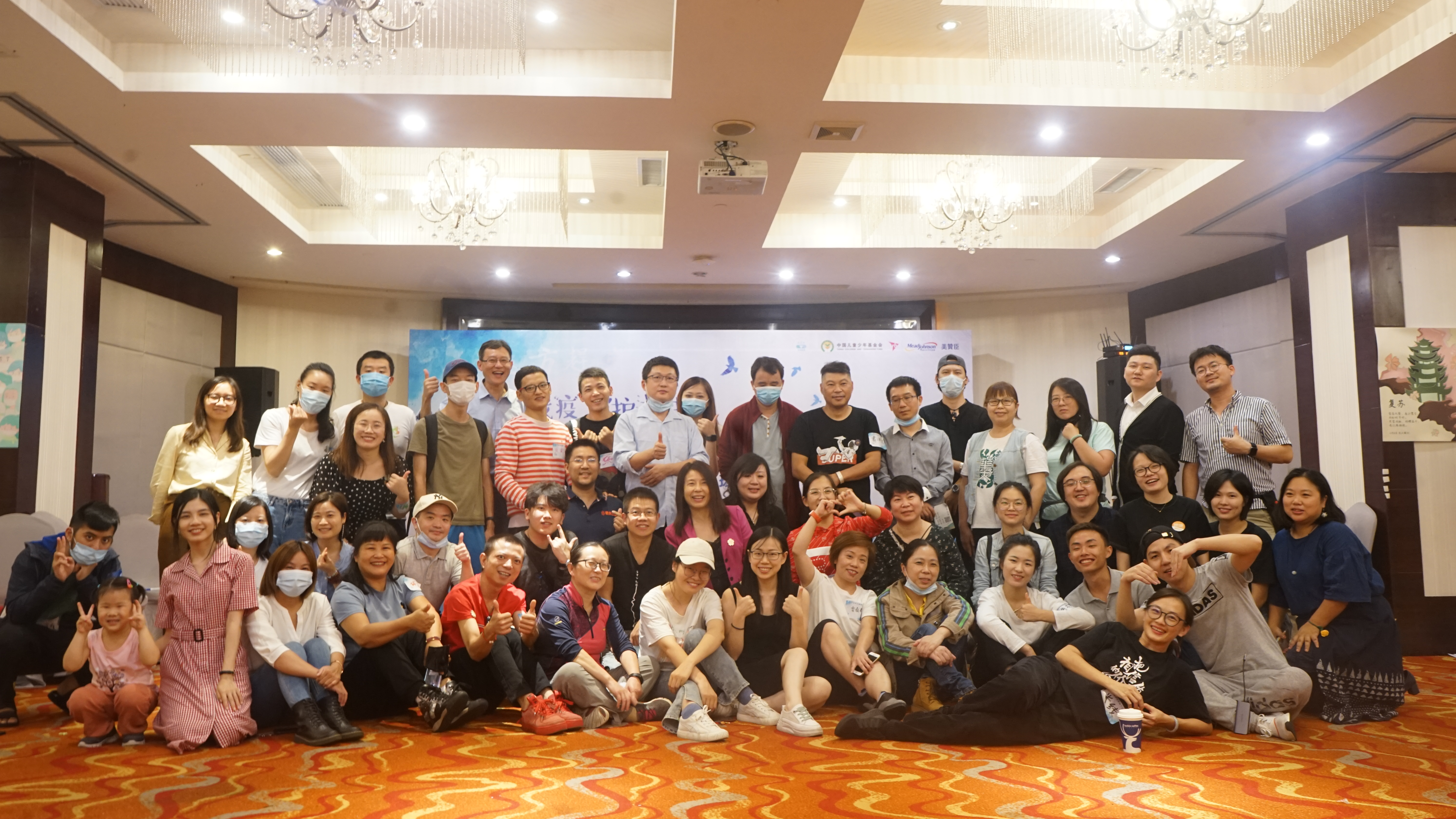
Hao Nan, founder of Zhuoming Info Aid, addresses a gathering at a conference titled 'China International Service Trade Association, Humanitarian Relief and Volunteer Service in the Post-epidemic Era', organized by China NGO Cooperation Promotion Association, Beijing, September 9, 2020. /Photo via Hao Nan
Hao Nan, founder of Zhuoming Info Aid, addresses a gathering at a conference titled 'China International Service Trade Association, Humanitarian Relief and Volunteer Service in the Post-epidemic Era', organized by China NGO Cooperation Promotion Association, Beijing, September 9, 2020. /Photo via Hao Nan
Amid the raging second wave of COVID-19 outbreak in India that has resulted in a severe shortage of oxygen, Chinese manufacturers have maintained a steady flow of oxygen concentrators, oximeters, ventilators and other relevant medical supplies to the South Asian country with some Chinese volunteers actively facilitating the procurements for a humanitarian cause in India.
On Sunday afternoon, India received the biggest-ever single consignment of more than 3,600 oxygen concentrators weighing approximately 100 tons that were flown in from China's Hangzhou Airport in a chartered cargo aircraft. Earlier this month, the Red Cross Society of China (RCSC) donated 100 oxygen concentrators, 40 ventilators and other anti-pandemic supplies.
Hao Nan, a Suzhou-based volunteer and founder of Zhuoming Info Aid, has been actively involved in the humanitarian relief efforts emanating from China towards providing the much-needed supplies to India. Hao's organization has been helping Chinese entities and Indian purchasers with the required technical information on medical equipment so that the right supplies are sourced and sent to India.
"We provided information and consultation services to Chinese donors and Indian recipients, helping them make better decisions and find more resources," Hao told CGTN Digital. "One of our clients is the Chinese Red Cross Foundation. We helped them find the technical details of oxygen concentrators, the law and standards of importing and exporting COVID-19 related equipment, and sources of oxygen concentrators," he said.
00:50

Read and watch: Chinese devices breathe life into India's Mission Oxygen
Hao said that there has been an enormous rise in the demand for oxygen concentrators from India in recent weeks with Chinese factories producing these machines at full capacity. "The main supply to India remains oxygen concentrators.... I know many of my friends in the non-profit area in China who are trying their best to help Indian friends to purchase oxygen concentrators."
"Indian donors in China usually ask some Chinese organizations to buy the equipment, but these organizations may not know the technical specifications, government regulations or market information. So, we provide consultation to these Chinese organizations," Hao said, revealing how he and his team of volunteers used online resources from sites such as Covid19india.org to prepare a priority list of items and cities that needed them the most.
Zhuoming Info Aid also offers consultations on ventilators, but Hao said there's still only a limited demand for these from India.
Earlier this month, many Chinese factories worked during the May Day holidays to meet the sudden rise in demands of oxygen concentrators from India, also in acknowledgment of the urgent efforts needed to curb the crisis.
'It's humanity at the end of the day'
00:47

Read also: Chinese factories busy producing medical equipment for virus-ravaged India
Mission Oxygen, one of the first initiatives by an Indian NGO to procure oxygen concentrators during the current pandemic, has so far procured over 6,000 of these equipment from China. Mission Oxygen is also importing five oxygen generation plants from China in the coming days.
Explaining why China emerged as their main source for procuring oxygen concentrators, Rahul Aggarwal, one of the key individuals behind Mission Oxygen, told CGTN Digital that the country's manufacturing capacity, people and logistics support, and competitive pricing made it an obvious choice.
Aggarwal was all praise for the support the initiative has received from the Chinese people and volunteers. "The people who are working in our logistics in China have been working 24/7. They have been sleeping in factories, visiting warehouses at odd hours, flying from one city to another at the dead of the night, reaching at wee hours," he said. "They have been following the cargo all the way from the factories to the warehouses and at the airports."
"The kind of support that we're getting from the local Chinese people there is tremendous. They feel the pain that we as Indians are feeling today, the troubles that we are facing, and I think it's humanity at the end of the day," Aggarwal added.
'Breaking the information imbalance'

Volunteers from NCP Relief Network gathered in Wuhan, September 2020. (NCP stands for novel coronavirus pneumonia, another name for COVID-19) /Photo via Hao Nan
Volunteers from NCP Relief Network gathered in Wuhan, September 2020. (NCP stands for novel coronavirus pneumonia, another name for COVID-19) /Photo via Hao Nan
Read also: How has China responded to India's COVID crisis?
Volunteers like Hao Nan have been key in facilitating such efforts from China at a time when another country is in need. Last year, Zhuoming Info Aid was engaged in humanitarian relief efforts for several other countries severely hit by the virus.
"We helped people in Iran, Italy, Spain and France from March to May last year, providing information services on medical supplies, etc and sharing with them the experiences we got from Wuhan," Hao said
Zhuoming Info Aid translated several relevant medical documents from Chinese to other foreign languages to spread awareness on coronavirus prevention and lessons from the medical response in Wuhan in the early stages of the outbreak.
"We are proud to break the information imbalance," he said.
(CGTN's Senior Sci-tech Editor Gong Zhe helped with translation)

